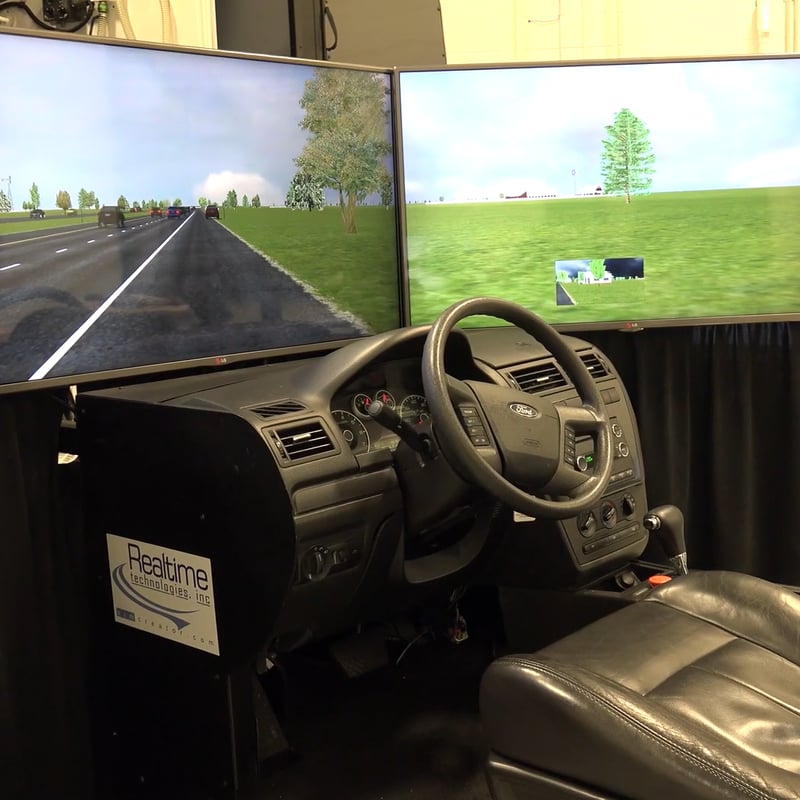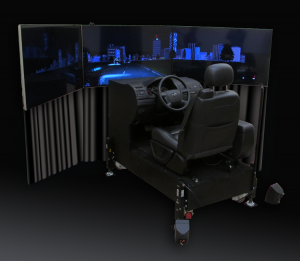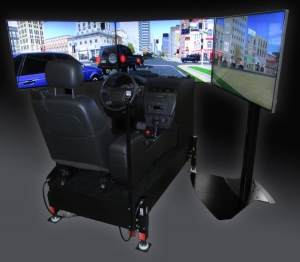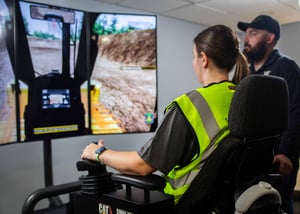D-BOX technology adds a dimension of true-to-life motion to the realtime technologies system

CONTEXT: MAKING THE FORAY INTO AUTONOMOUS VEHICLES
Realtime Technologies, Inc, a division of FAAC Incorporated, specializes in delivering research driving simulators and supporting a wide variety of customers. Their systems are used to give feedback on suspension, driver comfort, ride handling and new highway designs.
They’re also used to design active safety systems and are also making a foray into the exciting realm of autonomous vehicles.
Their customers fall into three industries: automotive, U.S. government and their suppliers, and universities.

CHALLENGE: PAVE THE WAY FOR THE FUTURE OF SIMULATION FOR ALL CLIENTS
Forward-thinking Realtime has been working with simulators since its inception in 1998. However, with a diverse list of clients, finding a training solution to fit all of them can be difficult.
“Customers in the auto industry use the systems primarily for active safety and autonomous vehicle research, as well as to learn how the driver will respond to various cues from the vehicle,” stated Richard Romano, President of Realtime Technologies. “The U.S. military and government, and their suppliers like Osh Kosh, BAE and General Dynamics, use the software and hardware to design off-road vehicles. The universities are doing more fundamental research, learning the best tactics for driver interaction, highway design, signage, and more.”
SOLUTION: INCORPORATE D-BOX MOTION TO ADD REALISM
While Realtime works with a variety of systems, they’ve partnered with D-BOX for about the last three years, ever since the release of the higher payload actuators. They were, in fact, some of the earliest adopters of the D-BOX 6 inch heavy payload actuators.
“We offer a mix of solutions but find that D-BOX is the ideal solution for customers who need the realism of motion and the convenience of a small actuator.”
Richard Romano, President, Realtime Technologies
“D-BOX is really great for providing ride comfort feedback and vertical vibration,” explained Romano. “The controllability of the roll and pitch is really important as well – the pitch itself helps in reducing simulator sickness because we can pitch the cab to match the angle of the simulator screen so the motion matches the visual. Hitting that sweet spot really makes a difference.”
The design for Realtime motion-enabled simulators is unique.
“We deliver simulators in two different configurations. One is a quarter cab or a half cab, which is just the seat and dashboard sitting on top of a motion platform. The other uses maximum payload actuators with a complete vehicle model on top. We just strip out the power train and suspension and put it on top of the actuator,” he said.
Systems such as these are being leveraged heavily by the automotive industry and universities.
RESULTS: MORE REALISTIC TRAINING, HAPPY CLIENTS
When asked about their customers’ feedback of D-BOX, Romano had nothing but good things to say.
“Customer feedback from those using D-BOX enabled systems is positive – they’re happy with the bandwidth and just how much acceleration you can get out of the system. They appreciate the ability to represent the higher frequency road noises and vibrations, and customers are really impressed by it.”
Richard Romano, President, Realtime Technologies
Recently, Realtime has started working with autonomous vehicles.
“We’ve built our own autonomous vehicle controller called SimDriver,” said Romano. “We have eight simulators in Silicon Valley and a growing number across the rest of the country where people are researching autonomous vehicle design. It’s a really exciting time, and we’re glad to be involved at such a ground level. There are a lot of challenges to be worked out, like how the autonomous vehicles will react to other cars, pedestrians, how they will behave at intersections and how to ensure the driver stays engaged. Even though the car is autonomous, it still needs a conscious, alert driver, so a lot of our research focuses on driver monitoring and engagement.”
Realtime is partnering with companies like Nissan, GM, Ford, Daimler, and Honda on these ground-breaking technologies.


